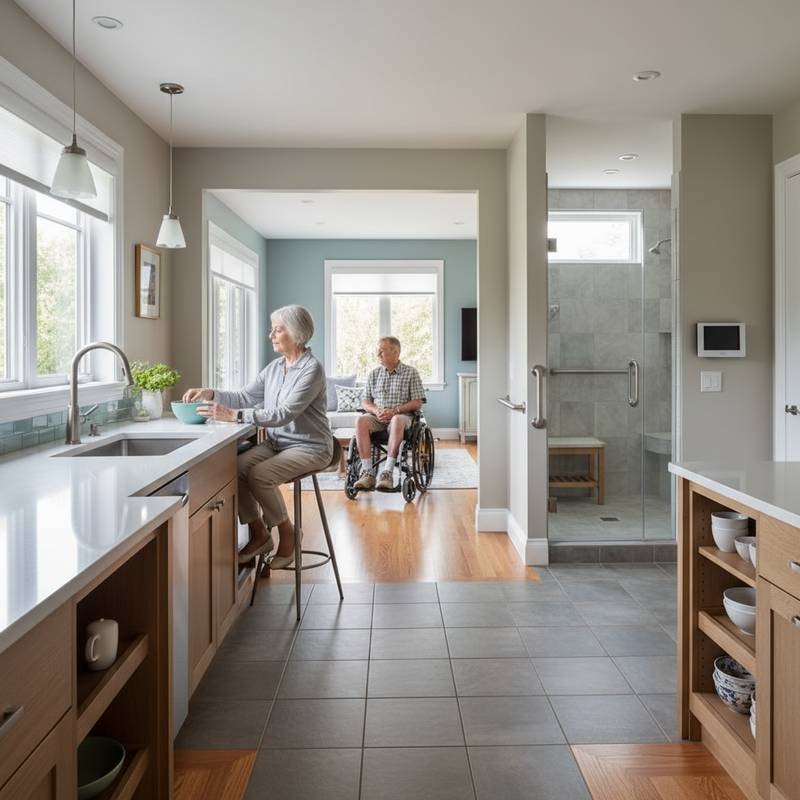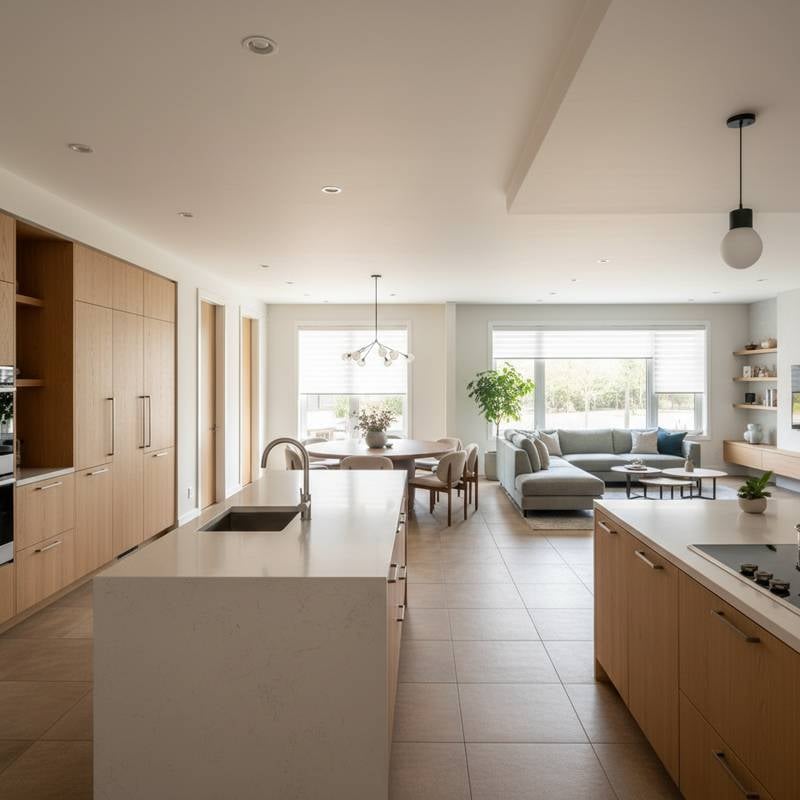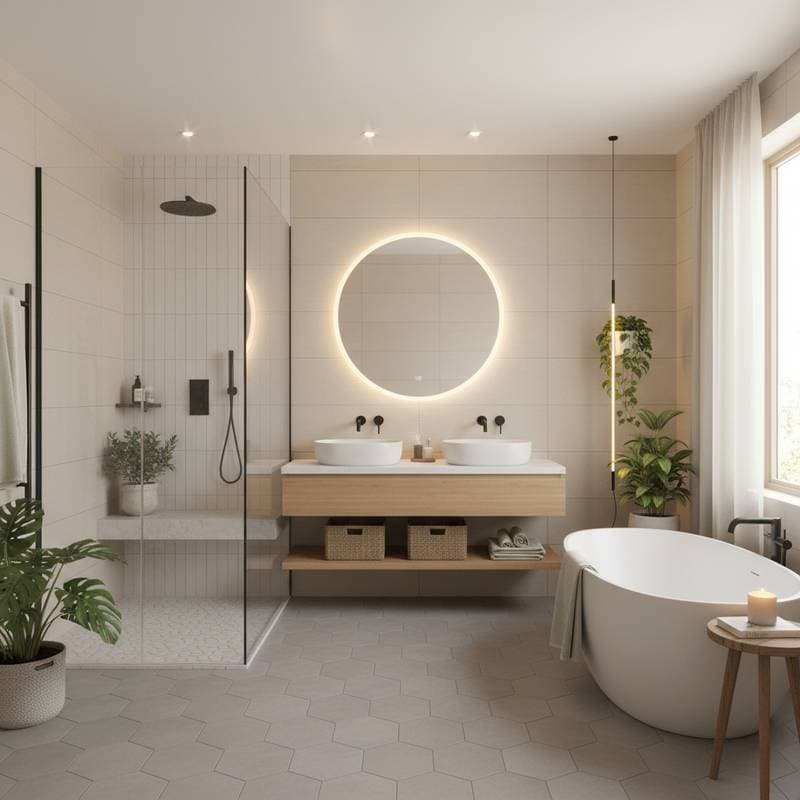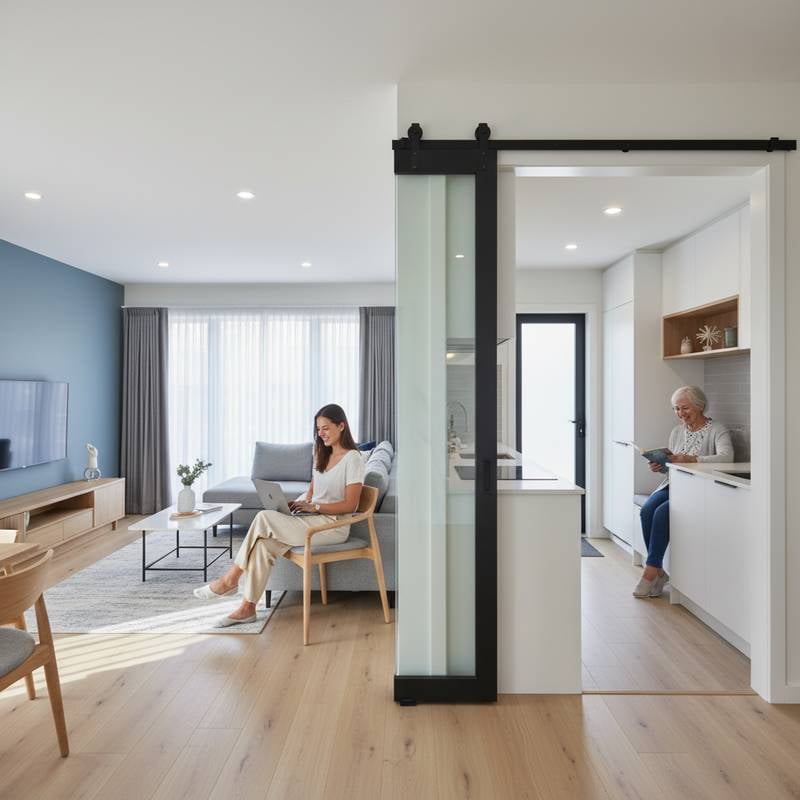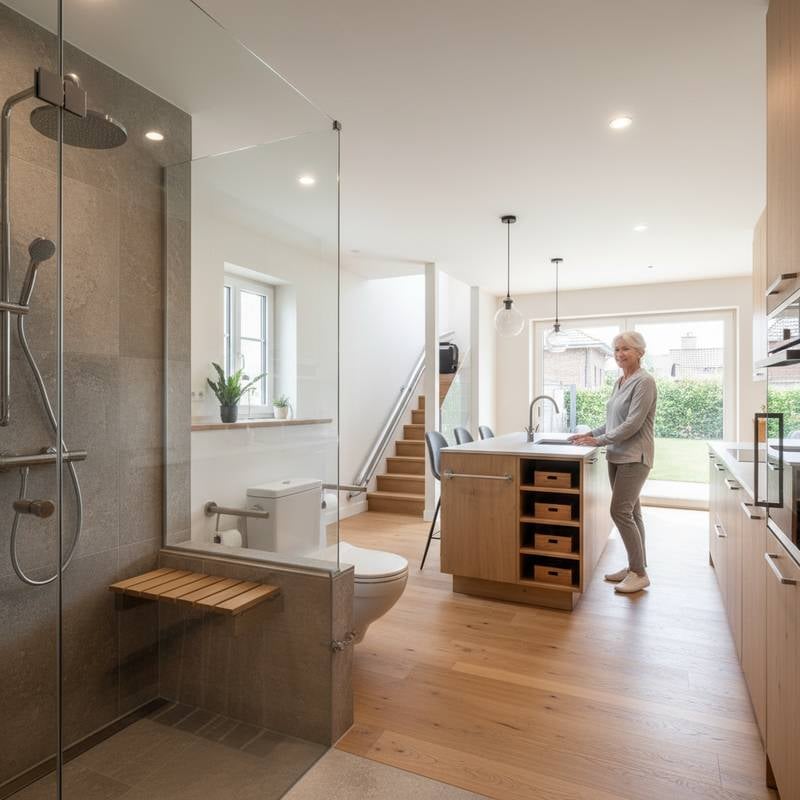Understanding 2025 Aging-in-Place Remodel Costs
Aging-in-place remodels enable homeowners to adapt their living spaces for long-term comfort and safety as mobility needs evolve. These modifications incorporate universal design elements that promote independence without requiring relocation. This guide details cost ranges from $10,000 for targeted updates to $100,000 for extensive whole-home projects, influenced by factors such as home size, location, material quality, and labor rates.
Key price drivers include regional labor costs, which vary from $75 per hour in rural areas to $150 or more in urban centers, and material selections that balance durability with aesthetics. Timelines typically span two weeks for minor adjustments to six months for major structural changes. Planning begins with a professional assessment to identify priorities like entryway access or bathroom adaptations.
Cost Breakdown by Project Scope
Basic safety upgrades focus on immediate risk reduction and often fall within the $10,000 to $30,000 range. These include installing grab bars, lever handles, and motion-activated lighting to prevent falls and enhance navigation. For a single-room focus, such as a bathroom refresh, expect $15,000 on average, covering slip-resistant flooring and adjustable-height fixtures.
Mid-level remodels, priced at $30,000 to $60,000, address multiple areas like kitchens and hallways. Widening doorways to 36 inches for wheelchair access or adding threshold-free entries improves flow throughout the home. Kitchen modifications might involve lowering countertops to 34 inches and installing pull-out shelves, adding $20,000 to the total while maintaining functionality for daily tasks.
Full-home transformations reach $60,000 to $100,000, incorporating advanced features like stair lifts or residential elevators. These projects require permits and engineering reviews, especially for load-bearing adjustments. High-end finishes, such as custom cabinetry or automated controls, can increase costs by 20 percent, but they ensure the home remains versatile for future needs.
DIY Options for Cost Savings
Homeowners with basic skills can manage select tasks to reduce expenses by 30 to 50 percent on labor. Start with non-structural changes that enhance safety without altering building codes.
- Securely install grab bars in bathrooms using wall anchors rated for at least 250 pounds of force.
- Swap traditional doorknobs for lever-style handles to ease operation for those with limited grip strength.
- Position motion-sensor lights in hallways and stairwells to illuminate paths automatically at night.
- Rearrange furniture to create 36-inch-wide pathways, testing for smooth wheelchair or walker navigation.
Follow detailed manufacturer instructions and test installations for stability. These efforts provide quick wins while building confidence for larger projects.
Engaging Professional Services
Complex modifications demand expertise to comply with accessibility standards and avoid hazards. Professionals handle structural, electrical, and plumbing work, ensuring installations meet local codes.
Hire licensed contractors for tasks such as:
- Expanding doorways or installing platform lifts to accommodate mobility aids.
- Creating curbless showers with reinforced walls for future grab bar additions.
- Upgrading electrical systems for additional outlets at accessible heights.
- Repositioning plumbing for comfort-height toilets and sinks.
Rates range from $75 to $150 per hour, with full projects billed at $75 to $250 per square foot based on scope and finishes. A certified aging-in-place specialist coordinates these elements, streamlining permits and inspections.
To select a reliable contractor:
- Verify active licensing through state databases.
- Confirm insurance coverage for liability and workers.
- Review references from similar accessibility projects.
- Obtain a detailed contract with workmanship warranties.
- Discuss experience in universal design principles.
Essential Safety Considerations
Safety remains paramount during planning and execution. Electrical work requires shutting off power at the breaker and using insulated tools to prevent shocks. Floor surfaces demand non-slip mats and immediate cleanup of water or debris to minimize fall risks.
Protective measures include wearing gloves, safety goggles, and sturdy footwear on site. Verify that all fixtures, like grab bars, support specified weight limits through testing. Maintain unobstructed walkways by storing materials in designated areas away from high-traffic zones.
Post-construction cleanup involves segregating waste: bag drywall and tile fragments in heavy-duty containers, recycle metals via community facilities, and transport hazardous items like paints to approved disposal sites. Vacuum dust daily and wipe surfaces with gentle cleaners to preserve new finishes and facilitate smooth inspections.
FAQ
How does universal design differ from aging-in-place remodeling?
Universal design builds environments accessible to all ages and abilities, emphasizing broad usability. Aging-in-place remodeling targets adaptations for seniors, prioritizing features like zero-step entries and ergonomic layouts to sustain independence.
Are permits required for common accessibility installations?
Minor additions like grab bars often bypass permitting, but structural elements such as ramps or doorway widenings typically need approval. Consult local building authorities to confirm requirements and avoid fines.
What is the typical cost for an accessible bathroom remodel?
A full update with curbless entry, reinforced grab bars, and anti-slip flooring ranges from $10,000 to $25,000, depending on size and custom features.
Is it feasible to remain in the home during renovations?
Small-scale work allows occupancy with minimal disruption, but extensive plumbing or electrical projects may necessitate temporary relocation for safety and efficiency.
What financial assistance exists for these modifications?
Local programs provide tax credits, low-interest loans, or grants through housing agencies and senior support organizations. Inquire about eligibility based on income and project details.
How durable are these home adaptations?
Quality installations endure 15 to 25 years with routine upkeep, comparable to conventional remodels, ensuring lasting value.
Does universal design serve only older adults?
It accommodates diverse needs, from young families navigating strollers to individuals recovering from injuries, promoting inclusive living spaces.
Planning Your Accessibility Upgrade
Begin with a thorough home evaluation to pinpoint mobility challenges and desired features. Develop a phased budget that sequences urgent safety items before expansive changes, allocating funds for unexpected adjustments. Collaborate with specialists versed in codes and design to integrate seamless, stylish solutions.
These investments not only safeguard health but also boost property appeal for resale. A well-executed remodel transforms the home into a resilient haven, fostering confidence and ease in daily routines for years ahead.

